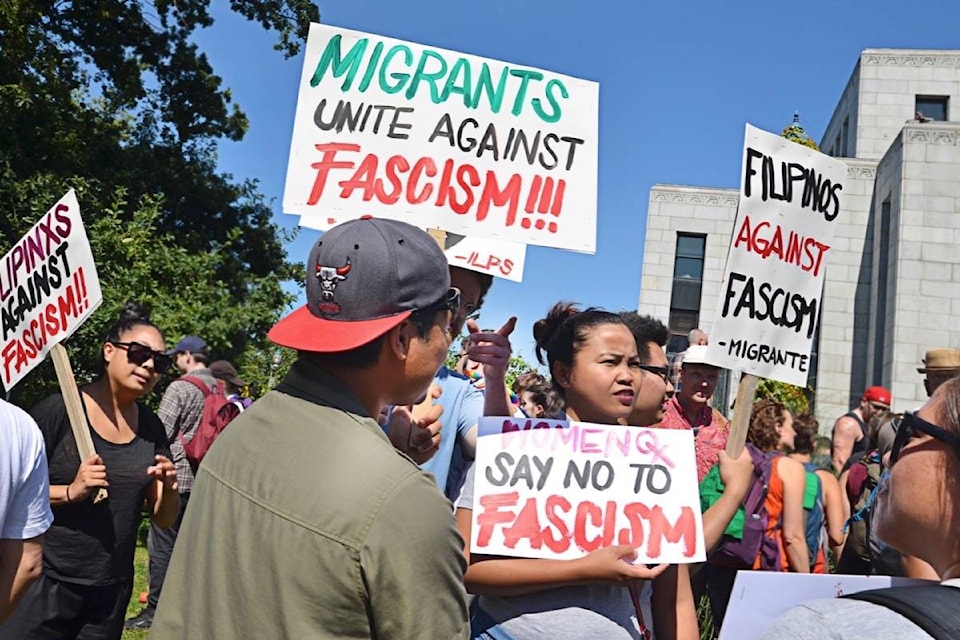A proposed anti-radicalization centre in the works for B.C. could be key to stopping violent extremism before it takes root.
That’s according to UBC political science professor Chris Erickson, who said although British Columbia is not a “hotbed for radicalism,” the government is making the right move by introducing a Countering Radicalization to Violence Centre.
“Radicalization doesn’t really restrict itself geographically,” said Erickson. “A lot of it is done through online forums that are coming from all over the world.”
The government will award a one-year contract on April 1 to provide services valued at under $30,000 per year at the new centre.
The facility aims to help “vulnerable individuals on the path to radicalization before engaging in criminal behaviour,” said a B.C. public safety ministry spokesperson, as well as “reduce the level of violent extremism across the province.”
The new centre will work also with the federal Office for Community Outreach and Countering Radicalization to Violence.
Canada’s National Terrorism Threat Level has been at medium, meaning a violent act of terrorism “could occur,” since October 2014.
How at risk is B.C.?
Erickson said there is risk anywhere that has an increasingly diverse population. Immigrants make up 28 per cent of B.C.’s population, though he said it’s not necessarily the newcomers who create tension.
“You also have radicalization from the people who were there already and seeing the immigrants coming in,” he said. “A sort of ‘Hey, this is our place, we don’t want you here’ sort of attitude.
“Radicalization builds on what sound like very common sense positions and just takes them to an extreme.”
When it gets dicey, Erickson said, people begin to view “the other” as a threat to their existence. “But it’s not like your existence is a threat to mine. We need to start to see each other as human beings, as opposed to some opposing force that threatens each other’s very existence.”
He said it’s especially important in areas where immigrants make up close to half the population, like the Lower Mainland, which sets a “groundwork against which people could become radicalized.”
In Richmond, where immigrants make up 60 per cent of the population, tensions have arisen over Chinese language-only signs. In December, a man was charged after calling a woman “a whore and a slut” while riding public transit.
Fake blood was poured on statues of Jesus Christ and the Virgin Mary in Cloverdale last fall, and someone scrawled “Kill all Christians” on the walls of a church in North Delta. In White Rock, police investigated after a swastika was spray-painted in a park.
White nationalism is not as prevalent in B.C. as it is south of the border, but Erickson said it occasionally rears its head, making it worth watching out for.
“Radicalism comes into strong effect when people feel alienated… when they don’t feel seen, they don’t feel like they’re human beings. At that point, what do you have left to lose?” he said.
“If you can address that, then the need to be radicalized – which I would argue is really a need to be heard – diminishes.”
How do you stop it?
“Safe spaces” have gained popularity in recent years as places where marginalized groups, such as the LGBTQ community, can go without fear of being discriminated against or shamed.
Erickson said that opportunity should be available to all groups, even ones that aren’t traditionally thought of as disadvantaged, so as to stop the problem before it gets too large.
The centre should drill down to people’s concerns, he said, and hear them and address them before they get too far along and can no longer be helped.
“They (hardcore radicals) are typically surrounded by a group of people who aren’t there yet,” he said. “But that seems to be the only option that’s available, so that’s where they’re going. You could potentially address that group.”
Like us on Facebook and follow us on Twitter.
